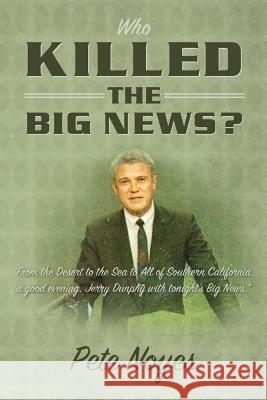Who Killed the Big News? » książka
Who Killed the Big News?
ISBN-13: 9781501042546 / Angielski / Miękka / 2015 / 174 str.
In 1961 television news was in relative infancy in the United States. Network news broadcasts ran just 15 minutes, hardly enough time to communicate the news of the day. Local news broadcasts likewise ran 15 minutes, five minutes for news, five minutes for weather and five minutes for sports. But in October of 1961 a brilliant television pioneer named Sam Zelman decided to change the TV news landscape by introducing "The Big News," an hour long broadcast featuring 45 minutes of local news and the 15 minute network broadcast with Douglas Edwards. The newspaper critics scoffed, it couldn't be done. But Sam proved them wrong. He introduced a former TV pitchman from Chicago, Jerry Dunphy, as his anchorman, and almost immediately a news legend was born. His other hires were Ralph Story, truly one of TV's greatest storytellers, weatherman Bill Keene and sports director Gil Stratton, a baseball umpire and part-time actor. It was one of the great success stories in the history of TV news with ratings that dominated the marketplace for a dozen years. One of Sam Zelman's other hires was Pete Noyes, a virtual unknown who had worked in the trenches of Los Angeles journalism for a local wire service and had built a reputation for investigative reporting. One of Pete's first stories in 1961 was that Los Angeles Dodger President Walter O'Malley had built his new stadium in Chavez Ravine with only one drinking fountain, the better to sell lots of beer to thirsty fans. In 1963 the Big News expanded to an hour and the CBS Evening News, featuring a new anchorman named Walter Cronkite went from 15 to 30 minutes. It was then Pete Noyes was named producer of the Big News. His exploits were legendary. He exposed the Mafia's plan to steal $14 million in Teamsters money earmarked for a luxury home development near Beverly Hills. He won the Edward L. Murrow award for investigative reporting when he revealed that Charles Manson and his so-called family were responsible for the horrific Tate-LaBianca murders. Pete fought the Bank of America to a standstill when its officers tried to kill his documentary, "The Anonymous Howard Hughes." And one of TV's most acclaimed programs, "The Mary Tyler Moore Show," had its roots in the Big News where the role of managing editor Lou Grant was based on Pete's daily grind. Pete describes the factors that led to the death of "The Big News," the TV consultants with their zany ideas, the inexperienced news directors and the bosses at CBS who looked the other way while the walls came crashing down around them.
Zawartość książki może nie spełniać oczekiwań – reklamacje nie obejmują treści, która mogła nie być redakcyjnie ani merytorycznie opracowana.











